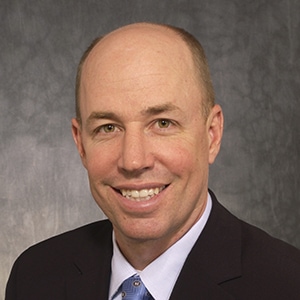Hoping for a boost from DC:New legislation could be a boon for regional banks that are already making headway via cost savings, niche markets and new capabilities.
A strong economy can have an interesting effect on institutional memory. It has been just 10 years since the world banking system was on the verge of collapse and the US was dragged into the worst financial crisis since the Great Depression. And yet despite that cataclysmic event, the Senate this past spring voted in sweeping changes to rules adopted in the wake of the financial crisis.
Sen. Mike Crapo of Idaho, the top Republican on the Senate Banking Committee, created a measure that, if passed by the House, would ease regulations on thousands of community and regional banks. The legislation would rewrite some of the 2010 Dodd-Frank Act and would adjust the size at which banks are subject to certain regulatory scrutiny, as well as exempt small banks from some requirements for loans, mortgages, trading and other measures.

Jerry Sargent, Citizens Bank President |
At the heart of the bill is the raising of the threshold at which banks are subject to federal oversight. Currently, banks with $50 billion or more are considered systematically important financial institutions (SIFIs). But the Senate bill increases that SIFI threshold to $250 billion. Banks with assets of less than $100 billion would be freed of current oversight requirements, and those with between $100 billion and $250 billion would no longer be subject to tougher rules after 18 months—although periodic stress tests could occur at the behest of the Federal Reserve. Ultimately, many regional banks would be free of the heightened security that came about as a result of the financial crisis.
That is the backdrop for Global Finance’s list of World’s Best Regional Banks in the US. While being squeezed by lower loan growth as interest rates finally begin to rise, regional US banks have been giving more financial advice to mid-size companies and affluent Americans to drive revenue growth.
For banks like Citizens Bank, which won for both the Great Lakes and Northeast regions, client relationships and knowledge of the market have been the keys to their success, and will likely continue to be going forward. “The Northeast is a very strong market for us,” says Jerry Sargent, Northeast region executive. “We have a significant presence in Boston and throughout the Northeast. We have banking relationships with a majority of our customers that go back decades, and we continue to invest in our capabilities to serve and consistently bring ideas to clients,” he adds. “The head of our Commercial Real Estate team sits in Boston, as does our head of Corporate Banking and, of course, our headquarters is in Providence. We’re deeply committed to the Northeast and our bankers invest a lot of time and energy to help ensure that the communities there are thriving and that our clients reach their potential.”
In the Great Lakes region, Joseph C. Giampetroni, Midwest region executive for Citizens, notes, “Our Commercial Real Estate team is a very active player in the Midwest, particularly in the Chicago market. I think we have a very solid footing here, but the Midwest is also a region where we have a great opportunity to grow and help clients reach their potential.”

William Rogers, SunTrust CEO |
Some banks, like SunTrust, which won for the Southeast region, have a size advantage that allows them to compete with the bigger banks while at the same time present a more regional team effort that connects with clients. According to their recent first-quarter results and announcement, the bank thrives with a broad suite of lending, depository, capital markets and advisory capabilities. In its announcement, William H. Rogers, Jr., chairman and CEO of SunTrust Banks, said, “This year is off to a good start, with earnings per share increasing 42% year over year. While a favorable operating environment has benefited our bottom-line results, our consistent strategy and improved execution are also contributing to our improved profitability.”
PNC Financial Group retains its top spot from last year in the Mid-Atlantic region. The bank recently announced a 16% rise in quarterly earnings, mostly fueled by interest rates and commercial lending. On a conference call to investors, William Stanton Demchak, Chairman and CEO of PNC, said, “We’ve built an industry-leading technology platform and we’re beginning to leverage its capabilities to innovate and enhance the ease with which our customers do business with us. And we’re looking forward to beginning the rollout of our new national retail digital strategy later in the year, which will help us take advantage of our brand awareness and will begin serving more customers beyond our traditional retail banking footprint.”
In the Far West region, Union Bank succeeded by relying on its advisory and wealth-management successes to lead its expansion in that part of the country. “Our colleagues serve as trusted advisors across a broad range of financial products and services, including a comprehensive suite of wealth management, commercial banking, commercial real estate, mortgage lending and retail banking services,” notes Timothy Wennes, West Coast president of Union Bank. “We are deeply committed to working collaboratively across these capabilities to help our customers achieve their financial goals.”

Timothy Wennes, Union Bank West Coast President |
In 2018, Union Bank is expected to enhance the in-branch and online banking experience; digitize the consumer product set; expand its reach across the diverse and growing commercial client segments; and focus on serving high-net-worth business owners and executives, women and multigenerational families.
In the Rocky Mountain region, Zions Bancorp retained its top spot from last year. The company, which offers banking services in the region, has been a relatively strong player and is well-regarded among stock analysts who cover the company. Part of its success over the past year has been about streamlining processes and, for example, making loans more efficient for users.
Rounding out the list are Commerce Bancshares in the Plains and Southwest Bancorp in the Southwest.
Overall, the regional banking sector is strong and able to fill niches that larger banks simply do not want to operate in. With the looming House bill yet to pass, there may even be more to look forward to in this sector, even as lean operations and rising interest rates play their own roles in the profitability of regional banks.
Best US Regional Banks 2018
| Region | Bank |
|---|---|
| Far West |
Union Bank |
| Great Lakes |
Citizens Bank |
| Mid-Atlantic |
PNC |
| New England |
Citizens Bank |
| Plains |
Commerce Bancshares |
| Rocky Mountain |
Zions Bancorp |
| Southeast |
SunTrust |
| Southwest |
Southwest Bancorp |



